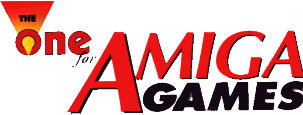

In April 1991 the magazine entered the second phase of its
existence. This marked a golden age for both the Amiga and Atari
St. The 8-bit formats were in an irreversible decline and owners
were migrating to the faster 16-bit systems. The quality of
software also rose when programmers finally got to grips with the
custom hardware. This made a single-format magazine more viable.
The decision was taken to split The One for 16-bit Games into two-
one for the ST, and the other for the Amiga.

Despite the split, content remained similar between the two
magazines. Many features fell into the category of general
computing subjects and would be of interest to users of both
platforms. For example, issue 32 of the Amiga and ST One had a
feature on Broadsword Productions' latest TV series 'Cyberzone',
hosted by Craig Charles. This was followed by articles on Hitachi,
joysticks, and an obituary dedicated to the Atari Panther. The
similarities between the two magazines were also demonstrated in
the cover artwork, it was almost exactly alike. This was not
surprising- both titles were produced by the same team. This made
it difficult to develop a unique identity without ignoring the
other.
 
Over the next few months the identity crisis was solved by the
individual markets, moving both titles in different directions.
This allowed games that were unique to a specific platform to make
an appearance. The news pages of the September 1991 issue featured
a screenshot of a new football game to challenge Kick Off 2. Little
did the writers realize that the as-yet unnamed game from Sensible
Software would quickly become turn into the biggest selling Amiga
title of all time. (In case you couldn't guess, the game was
Sensible Soccer.)
   
The magazine seemed to have regained its dominant position by
November 1991. The cover proudly announced it was the
biggest-selling Amiga title, quoting a circulation of 51, 625
readers (ABC Jan-June 1991). This annoyed the recently launched
Amiga Power, who pointed out that the circulation was based upon a
time period that the magazine was multi-format. The readership
would have been based upon a combination of Amiga, ST, and PC
owners. A second criticism made against the mag. were the unusually
high ratings that many games were awarded. Scores of 90%+ were
common and in many cases, the games simply did not deserve it.
Unknown to readers at the time, this problem would soon be resolved
in a rather dramatic fashion.

The next few months were a time of great change for The One for
Amiga Games. Emap made the decision to have a major shake-up of
their titles- Mean Machines was split into two titles, The One for
ST Games was incorporated into Europress' ST Action, and ACE magazine was closed. In addition, editor
Ciarán Brennan left the magazine for pastures new. This forced
the other members of the editorial team- Heather Turley, Paul
Presley, and Jools Watsham- to take on the role of co-editor. The
last two of these events proved to be the most important in
deciding the magazines' fate. The publishers decided that the
magazine was not reaching its potential. To give the magazine a new
direction and look, the original staff were moved and the ACE
writers took their place. It is unknown where the original staff
were transferred to, but speculation suggests they may have had a
part in the launch of ST Review.
The evolution of The One had took a surprising twist with the
magazines' relaunch. The resulting product was unlike anything that
had gone before, representing the ACE-ification of The One.
Back to The One Index
Back to 'The One for 16-Bit Games'
Forward to 'The One'
|













